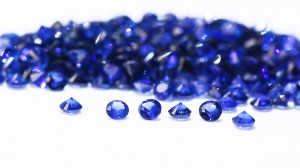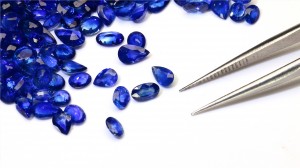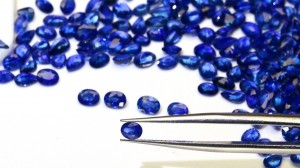Introduction With its stunning blue hue and timeless beauty, sapphires have been prized gemstones by civilizations for centuries. As one of the most famous gemstones in the world, many people are curious about how expensive sapphire is. In this article, we explore the factors that affect the value of sapphires, examine their historical significance, and explain why they are so prestigious in the gem world. Rarity and Mining
 Sapphire is considered one of the rarest and most precious gemstones on Earth. While blue sapphires are the most famous, they can also come in a variety of other colors, such as pink, yellow and green. Mining sapphire is a complex and challenging process, and most high-quality gemstones are found in limited geographic areas such as Sri Lanka, Myanmar, Madagascar and Kashmir. The rarity of high-quality sapphires, combined with the difficulties faced during mining operations, greatly contribute to their higher value in the gemstone market. Color and tone
Sapphire is considered one of the rarest and most precious gemstones on Earth. While blue sapphires are the most famous, they can also come in a variety of other colors, such as pink, yellow and green. Mining sapphire is a complex and challenging process, and most high-quality gemstones are found in limited geographic areas such as Sri Lanka, Myanmar, Madagascar and Kashmir. The rarity of high-quality sapphires, combined with the difficulties faced during mining operations, greatly contribute to their higher value in the gemstone market. Color and tone
 The color of sapphire largely determines its value. While blue is the most popular hue, colors can range from light blue to deep royal blue, with vivid and saturated blues being the most valuable. The presence of other secondary hues, such as purple or green, can affect a sapphire’s appeal and price. Like rubies, the finest and most valuable sapphires have a pure blue color known as “cornflower blue.” Ultimately, color and its intensity play a crucial role in determining the cost of sapphire. Clarity and Content
The color of sapphire largely determines its value. While blue is the most popular hue, colors can range from light blue to deep royal blue, with vivid and saturated blues being the most valuable. The presence of other secondary hues, such as purple or green, can affect a sapphire’s appeal and price. Like rubies, the finest and most valuable sapphires have a pure blue color known as “cornflower blue.” Ultimately, color and its intensity play a crucial role in determining the cost of sapphire. Clarity and Content
 Like most gemstones, sapphires often contain inclusions. Often referred to as “silks,” these internal flaws can enhance a sapphire’s beauty and value when aligned correctly. Depending on the size, location and visibility of the inclusions, they may or may not affect the clarity and overall value of the sapphire. High-quality sapphires with few to no visible inclusions are rated as more valuable, but unique inclusions can make sapphires more desirable and therefore more expensive if they create unique optical phenomena. Cut and Carat Weight
Like most gemstones, sapphires often contain inclusions. Often referred to as “silks,” these internal flaws can enhance a sapphire’s beauty and value when aligned correctly. Depending on the size, location and visibility of the inclusions, they may or may not affect the clarity and overall value of the sapphire. High-quality sapphires with few to no visible inclusions are rated as more valuable, but unique inclusions can make sapphires more desirable and therefore more expensive if they create unique optical phenomena. Cut and Carat Weight
The cut of a sapphire significantly affects its brilliance and overall visual appeal. The most common cuts for sapphires are the traditional round or oval, although a variety of fancy cuts can also add to a sapphire’s uniqueness and value. A precisely cut sapphire will optimize its colour, clarity and light performance. A sapphire’s carat weight also affects its value, with larger stones being rarer and therefore more expensive. However, cut and carat weight must be balanced against a gemstone’s color and other characteristics to determine its true value. Origins and Legacy A sapphire’s geographic origin can significantly affect its rarity, quality, and therefore value. Historically, sapphires from Kashmir, Burma, and Sri Lanka were renowned for their exceptional color saturation and transparency. The unique geology and mining practices of each region make the sapphires from these regions unique. In addition, sapphires from Madagascar, Thailand, Australia and other countries are also highly praised by the industry. The heritage and reputation of certain origins, and the historical importance associated with them, increases the overall demand and cost of sapphire from these origins.
Conclusion Sapphire is an alluring gemstone, known for its alluring blue hue, which undoubtedly represents elegance and prestige. Its rarity, intriguing colour, unique inclusions, exquisite craftsmanship and historical significance all contribute to its market value. Whether one is drawn to the allure of a large, perfectly cut sapphire, or a smaller gemstone with extraordinary color saturation, understanding what determines a sapphire’s value can help in investing in this enduring and profound gemstone. Make an informed decision when choosing a favorite gemstone. A symbol of wisdom and royalty, sapphire remains irreplaceable and timeless
Post time: Jul-08-2023
